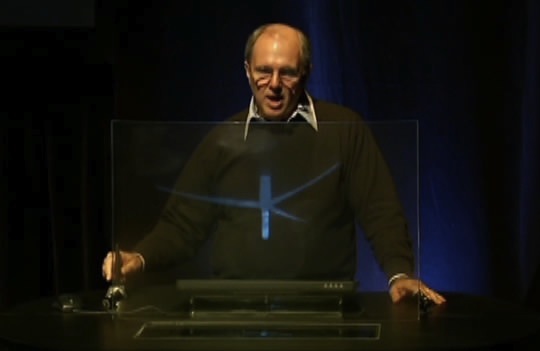Oki Digital Imaging Corp (ODI) exhibited a prototype of a head-up display that uses an LED display as a light source at Oki Premium Fair 2009, a trade show hosted by the company.
The LED display is 1.1 inches in size and made by using the company's "EFB (epi film bonding)" technology. The EFB technology is a technology to bond different materials by utilizing intermolecular forces. It eliminates the need for adhesive, wire bonding, etc, making elements smaller and lower in cost.
The power consumption of the new head-up display is about 1/10 those of head-up displays made by combining an LED backlight and an LCD panel. As a result, the LEDs of the new display generate less heat, enabling to use a simpler heat sink.
In addition, because the panel serves as a light source, the display has a simple structure. So, it is possible to reduce the number and thickness of components.
"Head-up displays using an LCD panel are available only to luxury cars," ODI said. "But, with our LED display, head-up displays will be inexpensive enough to be mounted on low-end cars."
The new display has an edge over existing displays in terms of resolution and brightness in addition to power consumption. Its LED element pitch is 65μm. The company has already developed an EFB technology to realize an LED element pitch of 20μm (equivalent to 1,200dpi) to 40μm (equivalent to 600dpi) for the print heads of LED printers. And, this time, the technology was applied to the head-up display.
The luminance of the new display is 32,000cd/m2 at the maximum in the case of whole surface emission and about 100,000cd/m2 in the case of partial emission, according to ODI. Also, it is possible to realize a contrast ratio of 9,000:1 or higher by lighting control. Compared with LCD displays, the new display can be easily viewed in brighter places and outdoors, the company said.
Because the display is monochrome and as small as 1.1 inches, ODI expects to use it for head-up displays. The company plans to ship samples by the end of fiscal 2010 and start volume production after that.
"We are aiming to apply the display to mobile devices and mobile phones, leveraging its high resolution and high luminance," ODI said.
The company intends to employ RGB-color LEDs to enable the new display to show colors and enlarge it for use in mobile devices in three to five years.








